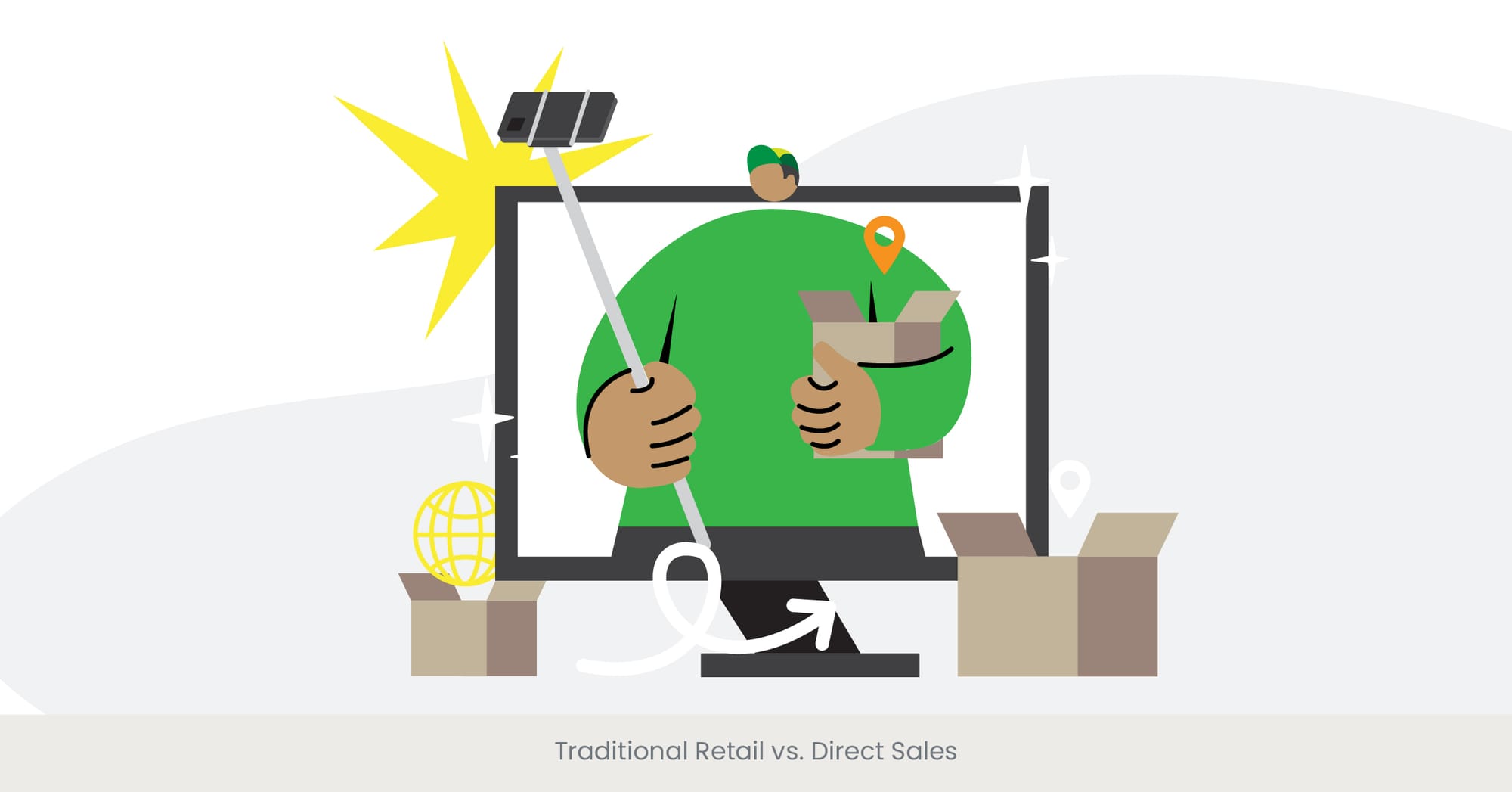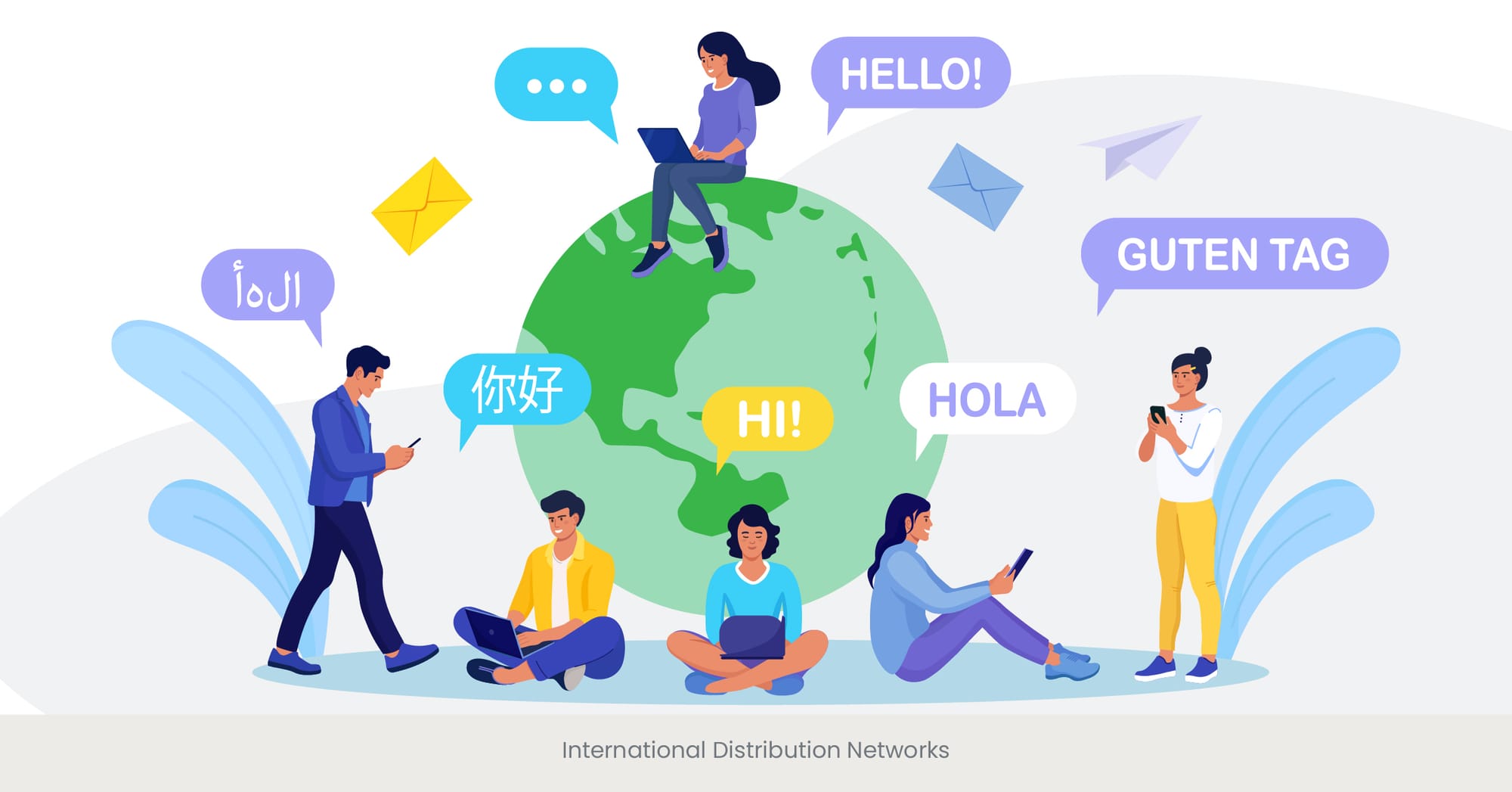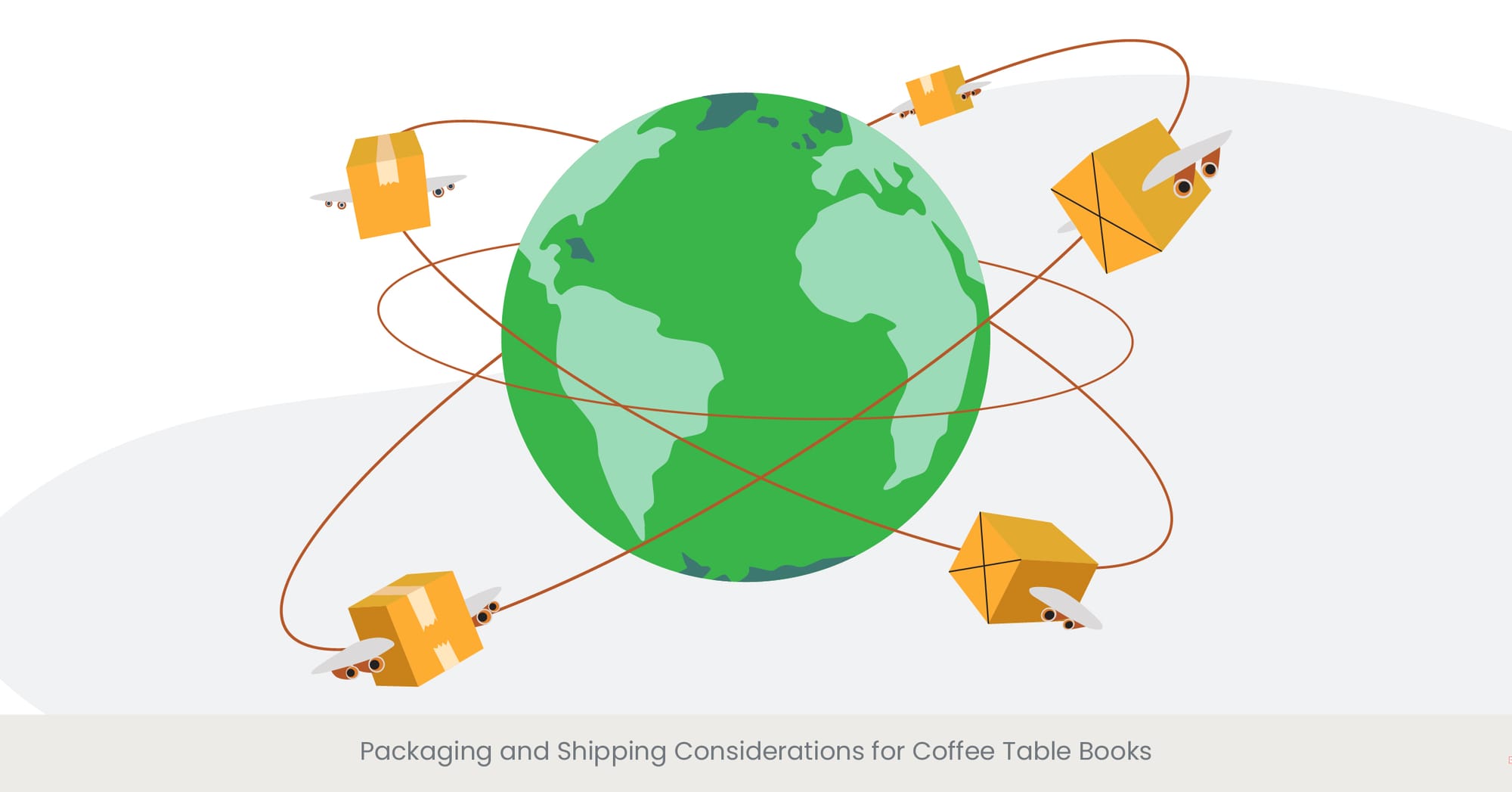
This section will help readers discover the advantages and nuances of different sales and marketing channels for coffee table books.
Traditional Retail vs. Direct Sales

Introduction to Traditional Retail vs. Direct Sales
Exploring the dynamics between traditional retail and direct sales channels is crucial for understanding the broader landscape of product distribution, especially for items like coffee table books. Traditional retail involves selling through third-party outlets like bookstores and department stores, whereas direct sales bypass intermediaries, connecting manufacturers or publishers directly with consumers.
Background and Evolution
Historically, traditional retail dominated the market as the primary channel for consumer goods due to its widespread reach and consumer trust. However, the advent of the internet and e-commerce has significantly boosted direct sales, providing brands with a direct line of communication to their customers. This shift has allowed for greater control over brand messaging, customer data collection, and overall sales strategies.
Real-World Applications and Examples
In the context of coffee table books, publishers often choose direct sales to cultivate a niche reader audience, offering exclusive editions or personalized experiences not available through traditional retail channels. For instance, a publisher might use its online platform to sell limited edition books directly to collectors and enthusiasts, often at a premium price. Conversely, traditional retailers like major bookstores remain crucial for reaching a broader audience that values the physical shopping experience. Direct sales can capture the essence of a coffee table book's unique qualities and offer a more personalized experience. Luxury Coffee Table Book Printing is one area where direct sales can give publishers control over the quality and presentation of the book.
References and External Validation
Studies from the Book Industry Study Group indicate that direct sales now account for approximately 35% of total book sales, up from 20% a decade ago. Major publishers, including those specializing in designer coffee table books, report that direct sales provide higher profit margins and deeper customer engagement. Trade journals like Publishers Weekly frequently highlight how shifts from traditional retail to direct sales are reshaping the book industry, reflecting broader trends in global commerce.
Online Marketplaces and E-commerce

Introduction to Online Marketplaces and E-commerce
The rise of online marketplaces and e-commerce platforms has revolutionized the way products are sold and distributed globally. For coffee table books, these digital channels offer a vast, easily accessible marketplace where publishers can reach consumers directly, often bypassing traditional retail constraints.
Background and Technological Impact
Online marketplaces like Amazon, eBay, and specialized book sites have democratized access to huge global audiences, providing smaller publishers the opportunity to compete on the same stage as industry giants. The technology behind e-commerce, including sophisticated logistics networks, real-time inventory management, and targeted marketing algorithms, has enabled publishers to optimize their sales and marketing strategies and distribution efficiencies.
Real-World Applications and Examples
In the crowded online marketplace, a coffee table book stands out by leveraging high-quality images and interactive content to target specific demographics interested in niche topics such as art, fashion, and design. For example, an online marketplace page might feature a page from a coffee table book on contemporary art, complete with a virtual tour of the pages, enhancing buyer engagement and interest. Creative Coffee Table Book Design plays a key role here by ensuring that the book’s visual elements captivate potential buyers.
References and External Validation
According to a report by the eCommerce Foundation, online book sales have increased by 60% over the past five years, with coffee table books seeing significant growth due to their appeal as both reading material and art pieces. Furthermore, a study in the Journal of Digital Commerce finds that visual merchandising techniques in e-commerce significantly boost sales of visually-oriented products like coffee table books.
Special Editions and Limited Runs

Introduction to Special Editions and Limited Runs
Special editions and limited runs represent a unique strategy in the publishing and distribution of coffee table books, targeting collectors and enthusiasts who value exclusivity and craftsmanship. These editions often feature premium materials, unique cover designs, or content that is not available in standard editions, making them highly desirable.
Background and Purpose
The concept of limited runs and special editions is rooted in creating a sense of rarity and luxury, enhancing the perceived value of the product. For publishers, this strategy not only helps in distinguishing their offerings in a crowded market but also allows them to command higher prices and build brand prestige. Coffee Table Book Design Inspirations often guide these special editions, drawing from art, culture, or fashion trends that appeal to the target demographic.
Real-World Applications and Examples
Publishers often collaborate with renowned artists, designers, or photographers to create these editions. For instance, a famous publisher might release a limited edition luxury coffee table book featuring exclusive photography by a notable artist, accompanied by hand-signed prints. Such editions are typically marketed to art galleries, high-end retailers, and through direct sales to dedicated followers of the artist or subject matter. Coffee Table Book Printing Services play a key role in ensuring that the materials used meet the high standards demanded by such limited editions.
References and External Validation
Market analysis indicates that limited editions can increase sales revenues by up to 50% compared to regular editions. A case study published in the Journal of Marketing Research highlights how one publisher's limited run of a designer coffee table book about iconic fashion brands significantly boosted their annual profits and enhanced brand recognition among high-end consumers.
International Distribution Networks

Introduction to International Distribution Networks
Expanding the reach of coffee table books beyond local markets through international distribution networks is essential for publishers aiming to tap into global demand. This strategy involves understanding and navigating various logistical, cultural, and regulatory challenges to successfully market and sell products in different countries.
Background and Importance
International distribution networks are complex systems that include partnerships with local distributors, adherence to international trade regulations, and adaptation to cultural preferences. These networks are crucial for publishers who want to maximize their market presence worldwide, especially for coffee table books, which often have universal appeal due to their focus on subjects like art, fashion, and design.
Real-World Applications and Examples
For example, a publisher specializing in coffee table books on contemporary art might partner with distributors in major cities around the world, such as New York, London, and Tokyo, to ensure their books are available in local bookstores and art galleries. Additionally, they might use international book fairs and exhibitions as platforms to showcase their products and secure distribution deals. Luxury Coffee Table Book Printing is essential in these international markets, where quality and craftsmanship are highly valued.
References and External Validation
According to a report by the Global Book Publishing Industry, international sales channels can contribute up to 40% of a publisher's revenue, depending on the genre and appeal of the book. Further, a study highlighted in International Marketing Review discusses how publishers can optimize their international distribution strategies by aligning their product offerings with regional trends and consumer behaviors.
Packaging and Shipping Considerations for Coffee Table Books

Introduction to Packaging and Shipping Considerations
Packaging and shipping are critical components of the distribution strategy for coffee table books, which often require special handling due to their size, weight, and value. Effective coffee table book printing services ensure that books arrive in pristine condition and meet customer expectations, which is crucial for maintaining a brand’s reputation and customer satisfaction.
Background and Importance
The challenges of packaging and shipping luxury coffee table book printing stem from their need for both protection and presentation. Packaging needs to be robust enough to protect the books during transit, which can involve long distances and multiple handling points, while also being aesthetically pleasing to the reader and reflecting the high-quality nature and history of the product. This is where creative coffee table book design truly comes into play, ensuring that both form and function are balanced.
Real-World Applications and Examples
Publishers often invest in custom packaging solutions that include hardcover boxes, cushioned inserts, and water-resistant wraps to ensure the books withstand the rigors of shipping. For example, a luxury publisher may use bespoke, branded boxes that not only protect the book but also enhance the unboxing experience, adding a touch of luxury and exclusivity that customers expect from high-end products. By incorporating these features, publishers elevate their coffee table book design inspirations, turning the delivery process into a memorable part of the overall experience.
If you're looking for inspiration on how to style your coffee table books or just want to see a few must-have titles for your collection, check out this video. The host shares their favorite designer coffee table books, along with some great ideas on where to buy them and how to display them in your home. Watch the full video below for more tips!
References and External Validation
Industry reports indicate that up to 5% of shipped goods arrive damaged due to inadequate packaging, leading to returns and customer dissatisfaction. A case study featured in Packaging Digest magazine outlines how one publisher redesigned their packaging strategy for coffee table books, resulting in a 30% decrease in damage rates and a significant improvement in customer reviews.
Industry reports indicate that up to 5% of shipped goods arrive damaged due to inadequate packaging, leading to returns and customer dissatisfaction. A case study featured in Packaging Digest magazine outlines how one publisher redesigned their packaging strategy for luxury coffee table book printing, resulting in a 30% decrease in damage rates and a significant improvement in customer reviews.
If you're ready to elevate your coffee table book design, we’re here to help. From concept to print, our team specializes in creative coffee table book design and printing services. Let us turn your vision into a stunning reality.
Inventory Management for Publishers

Introduction to Inventory Management for Publishers
Effective inventory management is crucial for publishers, especially those dealing with products like coffee table books that may require large investments in production and storage. Managing inventory efficiently ensures that capital is not tied up unnecessarily, and books are available to meet consumer demand without overproduction leading to excess stock.
Background and Importance
Inventory management in publishing involves balancing print runs with forecasted demand, storage costs, and sales cycles. For coffee table books, which are often printed in limited quantities due to their high production costs, precision in inventory management can significantly affect profitability. Overstocking can lead to high storage costs, while understocking can result in missed sales opportunities. Creative coffee table book design and meticulous planning play an integral role in keeping production in line with actual demand.
Real-World Applications and Examples
Publishers of decorative coffee table books might use just-in-time (JIT) inventory systems to minimize storage costs and reduce the risk of overproduction. By closely monitoring sales data and market trends, they can more accurately predict when to reorder stock. For instance, a publisher might increase print orders for a particular, creative coffee table book design ahead of the holiday season based on historical sales data, ensuring adequate availability without overstocking.
References and External Validation
According to a survey by the Publishers Association, effective inventory management can lead to a 20% reduction in associated costs and a 15% increase in sales due to better availability of titles. A case study in the Journal of Business Logistics illustrates how a mid-sized publisher improved its bottom line by implementing advanced forecasting tools that enhanced their inventory management practices.
Consignment and Wholesale Arrangements

Introduction to Consignment and Wholesale Arrangements
Consignment and wholesale arrangements are vital components of the distribution strategy for publishers, particularly for those dealing with specialty items like coffee table books. These arrangements allow publishers to place their products in retail locations without immediate sale, reducing upfront risks and broadening their market reach.
Background and Importance
In a consignment setup, books are placed in retail stores, and publishers are paid only when a sale occurs, while wholesale involves selling books in bulk at a discounted rate to retailers who then assume the risk of selling to consumers. Each method offers different advantages and challenges, and choosing the right approach can significantly impact a publisher's cash flow and market penetration.
Real-World Applications and Examples
For instance, a publisher of designer coffee table books might choose consignment arrangements with high-end furniture stores or art galleries, targeting customers interested in home decor and art. This placement ensures that books are displayed in environments that align with their aesthetic vision and audience. On the other hand, wholesale might be preferable for broader distribution through major bookstore chains where larger volumes can be moved more quickly.
References and External Validation
Industry data shows that consignment arrangements can increase product visibility and sales opportunities by 25% compared to traditional stock-and-sell methods. A study published in the International Journal of Retail & Distribution Management highlights successful case studies where publishers have significantly expanded their reach through strategic consignment partnerships with retailers that cater to specific niche markets.
Digital Sales Platforms and E-Books

Introduction to Digital Sales Platforms and E-Books
In the evolving landscape of book publishing, digital sales platforms and e-books offer significant opportunities for reaching a broader audience. While coffee table books are traditionally enjoyed in print, digital platforms provide an avenue for diversifying formats and accessing global markets.
Background and Technological Impact
The rise of digital sales platforms like Amazon Kindle, Apple Books, and Google Play has transformed how books are sold and consumed. E-books provide a cost-effective option for publishers, eliminating the need for physical production and distribution. While coffee table books are visual and often best appreciated in print, digital enhancements and interactive features can make them appealing in digital formats as well.
Real-World Applications and Examples
Publishers of coffee table books are increasingly offering digital versions that include interactive content such as videos, 360-degree image views, and linked references, enriching the reader's experience. For example, a publisher might release a complete digital version of a popular coffee table book design inspirations related to modern art, complete with embedded videos of artists discussing their works, making the reader's digital experience more engaging.
References and External Validation
Research by the Digital Publishing Association shows that digital book sales have increased by 30% over the past year, with enhanced e-books comprising a significant part of this growth. Studies in the Journal of Digital Media & Policy discuss how digital platforms are not only a supplemental revenue stream but also a primary channel for new publishers entering the market.
Library and Institutional Sales

Introduction to Library and Institutional Sales
Library and institutional sales represent a huge and critical market segment for publishers, particularly those specializing in high-quality coffee table books. These sales involve distributing books to libraries, universities, museums, and other institutions, which use them as resources for education and public engagement.
Background and Significance
Institutions such as libraries and museums purchase coffee table books not only for their aesthetic value but also for their educational content, which can enhance their collections and provide visitors with valuable insights into various subjects. These sales are often facilitated through specialized distribution channels that cater to institutional buying patterns and needs.
Real-World Applications and Examples
For example, a publisher might collaborate with museum gift shops to supply coffee table books related to current exhibitions. This not only helps the shop and museums offer relevant products to their visitors but also allows publishers to target audiences directly interested in understanding their books' themes. Additionally, academic libraries at art schools might purchase books on the history of contemporary art to support their curriculum, providing students with access to high-quality visual material.
References and External Validation
According to a report by the Association of American Publishers, institutional sales account for approximately 15% of the total market for coffee table books. Further, a study in the Library Resources & Technical Services Journal found that books with high production values, such as coffee table books, have a higher circulation rate in libraries compared to standard textbooks, indicating their popularity and utility.
Want more insights on how to navigate institutional sales? We regularly share detailed blogs and guides that offer expert advice on boosting your book's reach to libraries and other institutions.
Second-Hand and Collector Markets

Introduction to Second-Hand and Collector Markets
The second-hand and collector markets play a significant role in the life cycle of coffee table books, offering a venue for resale and trading among enthusiasts who value rarity and historical significance. These markets not only help to discover and sustain interest in out-of-print or limited edition books but also support the eco-friendly practice of recycling and reusing products.
Background and Economic Impact
Collector markets are driven by the scarcity and condition of items, making coffee table books with artistic, historical, or cultural significance highly desirable. Second-hand markets, facilitated by online platforms and specialty bookstores, provide access to a wider audience, often enabling books to find new homes after their initial sales cycles have completed.
Real-World Applications and Examples
For instance, rare coffee table books about the history, iconic fashion designers or landmark art and photography exhibitions often find robust demand in collector circles, fetching prices significantly higher than their original retail value. Platforms like eBay and AbeBooks are popular among collectors for finding such treasures. Additionally, second-hand bookstores often feature sections dedicated to used coffee table books, catering to budget-conscious art, photography, and design enthusiasts.
References and External Validation
A report from the Antique and Collectible Books Association shows that the market for rare and collectible books has grown by 20% over the past five years, with coffee table books featuring prominently due to their visual and artistic content. Studies in the Journal of Consumer Culture have noted that the appreciation of these books' aesthetic and material qualities contributes to their sustained value in the second-hand market.
A report from the Antique and Collectible Books Association shows that the market for rare and collectible books has grown by 20% over the past five years, with coffee table books featuring prominently due to their visual and artistic content. Studies in the Journal of Consumer Culture have noted that the appreciation of these books' aesthetic and material qualities contributes to their sustained value in the second-hand market.
Looking to dive deeper into luxury coffee table book printing? Check out our step-by-step tutorials and YouTube videos to learn how to create a high-quality coffee table book from scratch.
Frequently Asked Questions
Why are Assouline books so expensive?
Assouline books are known for their high-quality materials, exquisite craftsmanship and photography, and unique story content, which contribute to their higher price point. These books are often considered luxury items and collectibles in the art and design worlds.
What are coffee table books called?
Coffee table books are also commonly referred to as oversized, illustrated books designed for display. They are typically known for their aesthetic appeal and display of creativity and are used as conversation starters in living spaces.
Do people still use coffee table books?
Yes, coffee table books remain popular for their visual appeal and as a means of expressing personal interests or as artistic elements in home décor or architecture.
How many books should be on a coffee table?
The number of books on display on a side stand or coffee table can vary, but typically, two to five books are arranged to create a balanced and attractive display.
Is there a market for coffee table books?
Absolutely, there is a huge and strong market for coffee table books, particularly in fields like art, photography, architecture, fashion, and travel, where visual content and creativity is highly valued.
How to make a successful coffee table book?
To create a successful coffee table book, focus on high-quality content, striking visuals, creativity and a full story or unique angle on story or subject matter that appeals to specific interests or markets.
How many books should you stack on a coffee table?
Stacking three to four books on a coffee table can make an attractive display, allowing the page of each book to stand and be seen by visitors without cluttering the space.
What can I do with a lot of coffee table books?
Besides displaying when guests see them, coffee table books can be rotated based on the season or current interests of guests, or even donated to libraries or sold in second-hand markets if no longer wanted.


%20(1).jpg)
%20(1).jpg)


